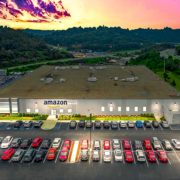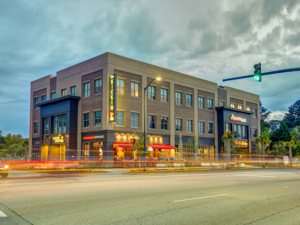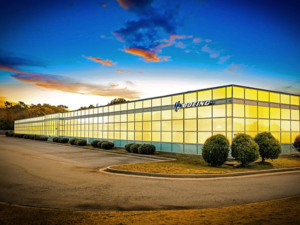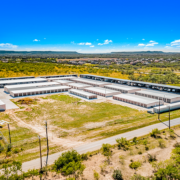10 CRE Market Trends to Watch in 2022
Commercial real estate investors and owners have faced a series of challenges due to the COVID-19 pandemic and those challenges will evolve. Nobody can predict the future, but we can get an idea of how things in 2022 will progress by looking at current CRE market trends.
While we can’t claim to be on the other side of the pandemic, the country is recovering. That means demographic and business trends will accelerate. When it comes to CRE investments, there will be an increased demand for certain assets as the year progresses.
Savvy investors will consider CRE market trends when making decisions about where to put their money so they can take advantage of the more popular assets and how to look for opportunities among all asset classes.
CRE Market Trends to Watch
Here are 10 CRE market trends investors should watch for as we move into the Q2 of 2022 and look even further into the future.
1. Continued Market Recovery Post-COVID-19
The first CRE market trend to keep an eye on as 2022 progresses is the continued recovery of economic and CRE markets. That’s not to say everything will be on a constant upward slope. As current events affect prices, you can expect natural ups and downs. As we move further into 2022, we are getting closer to a “new normal” where the market will gain more stability and CRE investment opportunities will keep improving. There may be setbacks and flare-ups along the way, but trends indicate that they will be short-lived.
2. Evolving Retail Models
The way people shop has changed over time, which impacts retail property investment. During the early days of the pandemic, consumers were pushed to spend a lot more online. But now that people are routinely out-and-about again, consumers are returning to retail spaces for in-person shopping. That doesn’t mean online shopping will drop off. Sales have risen in both online and in-store channels, so consumers seem to want more of both types of shopping.
In-store sales are rebounding for retailers because shoppers want to see their buying options in person. Leading to reduced vacancy rates in brick-and-mortar retail spaces, good investment opportunities in the retail property sector will increase and capital for financing will be readily available.
3. Self-Storage as a Popular Asset
Self-storage is a very popular asset to invest in now. A large number of American households rent storage units and demand remains high during all phases of an economic cycle. That means occupancy rates are stable and revenue streams are steady. Investing in self-storage is advantageous because it is somewhat passive and requires less capital. Check out our post on why self-storage investment is a smart move for your portfolio for a more in-depth look at this CRE trend.
4. Continued Growth in the Multifamily Sector
In 2021, multifamily investment performed very well. Investors can expect that to continue through 2022. According to Crexi, multifamily was the fastest-selling asset type in 2021. The average closing times reached 123 days in Q3 and the market should see increased demand in the next year.
Factors behind this CRE market trend are low supply in single-family homes due to construction limits, price competition along with household formation. The economy is growing, leading to the formation of new households looking for housing. Along with household formation, growth is being driven by people looking for quality multifamily housing with more space to accommodate growing families and working from home.
5. Increased Interest in Senior Housing
Senior living, skilled nursing, and residential health care facilities were heavily impacted by COVID-19. Infections limited move-ins and occupancy of those facilities dropped. However, occupancy rates started increasing at the end of 2021 and will continue to rise as a CRE market trend in 2022. Full recovery may not happen this year, but investors should start considering this asset class again.
6. Changes in Office Space
Due to the pandemic, there is an existential change in the way people view workspaces. Working from home shifted attitudes about working in an office, making some investors wary of office properties. But that doesn’t need to be the case. While working from home seems to be here to stay, it will be part of a flexible hybrid model that also includes in-office work.
The office will once again be the hub of business activity as people split their time between remote and in-person workplaces. As this setup becomes more common, occupancy in office spaces will be steadier. Demand for flex space, coworking space, and turnkey office space will also create investment opportunities. Forbes predicts that employers will look for larger, cost-effective locations while also demanding spaces with nice amenities and flexibility.
7. More Mixed-Use Space and Adaptive Reuse
Investments in hospitality, office, and retail spaces will be smart moves as recovery from the pandemic continues, but changes to properties in those sectors may provide opportunities that will add value to portfolios in the future. Mixed-use zoning and adaptive reuse will be CRE trends to keep an eye on going forward. For example, an office becoming a mixed-use space may yield impressive returns in the future as the market continues to change.
8. Investors with Cash In Hand
Many real estate investment firms and private equity investors have cash ready. Many investors are making faster decisions and looking to invest capital before the cost of borrowing increases too much. They will be looking to put money into the hot asset classes like self-storage and multifamily, but they will also look for other places to invest their stockpiled cash, in sectors such as hospitality and retail.
9. Supply-Chain Issues Impacting Industrial Development
Manufacturers, logistics companies, and retailers are all seeking solutions for supply chain issues. These issues have been plaguing businesses for a long time, but it has just recently caught up to the commercial real estate market.
Transportation and insurance costs are rising and space near seaports is limited and in high demand. For those reasons, things are moving inland for people building new facilities and working on development projects for expansions. There will be an increase in industrial properties in population centers, and in close proximity to highways and airports.
10. The Proptech Revolution Continues
Technology and software will continue to grow in importance in the commercial real estate world. Property technology (proptech) is vital to many aspects of CRE investments for both brokers and landlords. Software platforms and databases are used for managing deals and portfolios and aid in property management.
Proptech is the key to making things more customer-centered as tenants expect online platforms to streamline operations and improve their user experience.
However, it’s important to keep in mind that technology alone won’t yield success in the commercial real estate industry. An online platform or database will never replace the industry knowledge of an experienced broker. Using property technology to connect people and systems simply makes things more efficient, which drives revenue.
Work with an Experienced Broker
If you’re an investor looking to take advantage of the current CRE market trends and grow your portfolio, get in touch with a SIG advisor. Our experts are uniquely positioned to help you get the most out of your investment. We have brokers that are designated experts in each CRE product type so you can explore the current trends within each specific asset type.
Want to learn more? Call 844.4.SIG.NNN or contact us here to talk about working with our team.














